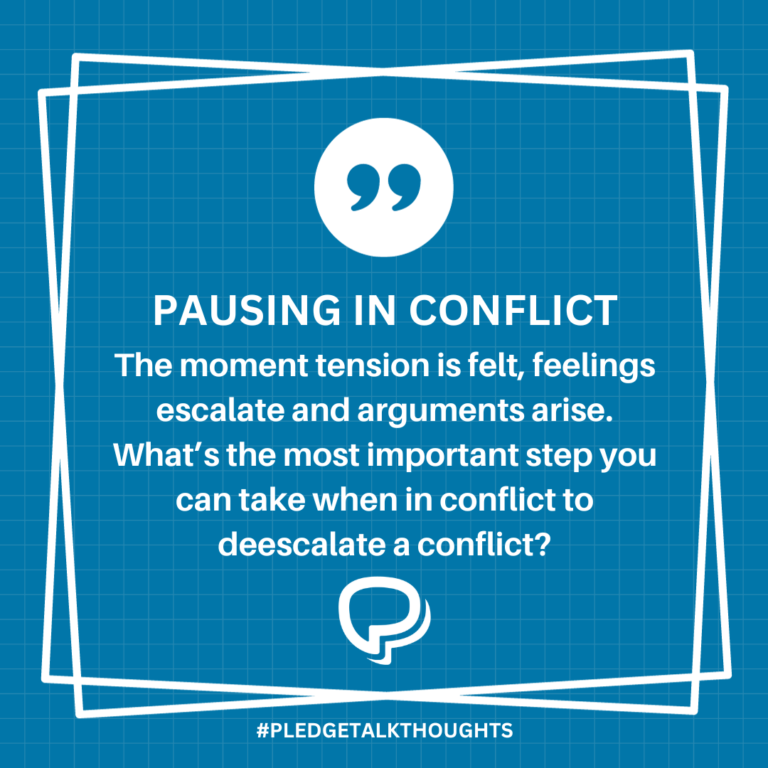Further thoughts on the most important step to take when in conflict! 10/12/23
Do either of you feel a bit of tension right now – this moment – between you?” I had stopped a couple mid-sentence in a recent counseling conversation to ask them the question.
They looked at me, then at each other, as if they were assessing the situation. First, the husband and then the wife agreed. They were experiencing tension, though they would not have recognized it as such if I had not stopped to ask.
We talk about PLEDGEtalk being a six-step process to resolve conflict – and then miss the most important time to put it into practice. The time is the VERY moment when you experience even the smallest amount of tension in you, in the person in front of you, or in between you.
PAUSE and start the process – the MOMENT TENSION IS FELT!
All too often we don’t notice the tension. Perhaps we are unaware of low levels of tension. We weren’t taught much about emotions or what to do with them so we trained ourselves to ignore them. Maybe we are too focused on ourselves and what we want to say that we miss seeing the tension. It could also be that we don’t care at that moment – we just want to unload. Unfortunately, in doing any of the above we sail right past the tension, and the wind picks up rather quickly until we are in a full-blown conflict storm.
Instead, PAUSE and start the PLEDGEtalk process – the MOMENT TENSION IS FELT!
Another error people make when they first hear me teach PLEDGEtalk is to think that Pausing is only something to do when in conflict, at the beginning of the process. Though I am glad they recognize and may even practice the step of Pause in this way – it is not at all the only time to do so. Throughout any conflict conversation, tensions will rise and fall. My counsel is to pause repeatedly as often as you experience the tension. Sometimes it will be a verbal pause “Excuse me, I’m sorry, I know I just reacted, give me a moment to dial down and do better at communicating (or listening.)” You take a few deep breaths, remind yourself how this person matters to you, tell yourself they have a story that needs to be heard too, and then you begin again. Sometimes it is an internal pause, where you catch yourself before reacting outwardly. You rehearse the same line of thinking as just written, as you work to stay focused in your listening to hear what the other wants you to hear. This type of “pausing” could take place numerous times in a conflict conversation.
In addition, if we add the idea that we can use the PLEDGEtalk principles in every conversation throughout the day, we will see even more opportunities to Pause! If we just catch ourselves from interrupting others, if we stop reacting to every idea that we don’t agree with, if we don’t take everything personally – and Pause instead – we might be surprised how often we use that first step of PLEDGE. When I stop and think about it, I bet I pause a hundred times a day or more! Not saying that to say how good I am as much as to say how reactive I can be!
Just in case you didn’t get the main point in this post, here it is again:
PAUSE and start the PLEDGEtalk process – the MOMENT TENSION IS FELT!
🙂🙂🙂🙂🙂🙂🙂🙂🙂🙂🙂🙂🙂🙂🙂🙂
What’s your takeaway – leave a sentence below!
Mark Oelze, Author/Creator of PLEDGEtalk
If you are new to PLEDGEtalk, download the Infographic by CLICKING HERE and learn how to quiet the storms in your relationships!





Leave a Reply
Want to join the discussion?Feel free to contribute!